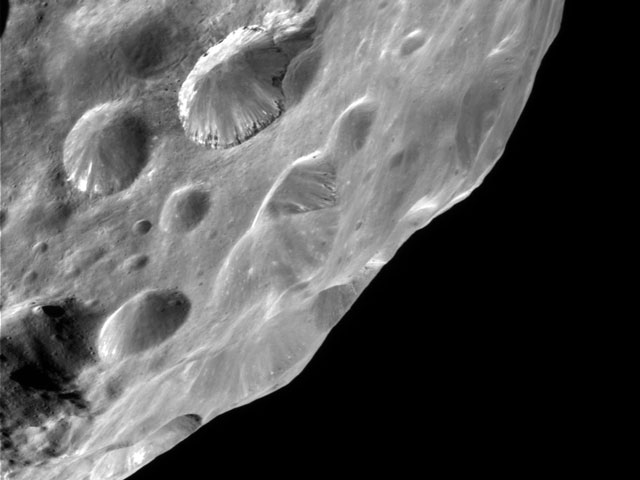Explanation: What caused the unusual light and dark layers on Saturn's moon Phoebe? The layers were discovered just Friday during the Cassini spacecraft flyby of the small moon. Such layering is particularly evident on the crater just above the image center, where alternating light and dark material makes this crater appear particularly structured. Cassini scientists speculate that such layering might result from an impact where a dark surface layer becomes intertwined with a lighter subsurface ice layer. The above image spans about 80 kilometers and was taken when Cassini was only about 13,000 kilometers from Phoebe. At the end of June, the Cassini spacecraft will be instructed to fire its thrusters to decelerate into orbit around Saturn.
1999 2000 2001 2002 2003 2004 2005 2006 2007 2008 2009 2010 2011 2012 2013 2014 2015 2016 2017 2018 2019 2020 2021 2022 2023 2024 2025 |
Yanvar' Fevral' Mart Aprel' Mai Iyun' Iyul' Avgust Sentyabr' Oktyabr' Noyabr' Dekabr' |
NASA Web Site Statements, Warnings, and Disclaimers
NASA Official: Jay Norris. Specific rights apply.
A service of: LHEA at NASA / GSFC
& Michigan Tech. U.
|
Publikacii s klyuchevymi slovami:
Phoebe - Saturn - cassini spacecraft - Feb - Saturn - KA Kassini
Publikacii so slovami: Phoebe - Saturn - cassini spacecraft - Feb - Saturn - KA Kassini | |
Sm. takzhe:
Vse publikacii na tu zhe temu >> | |
